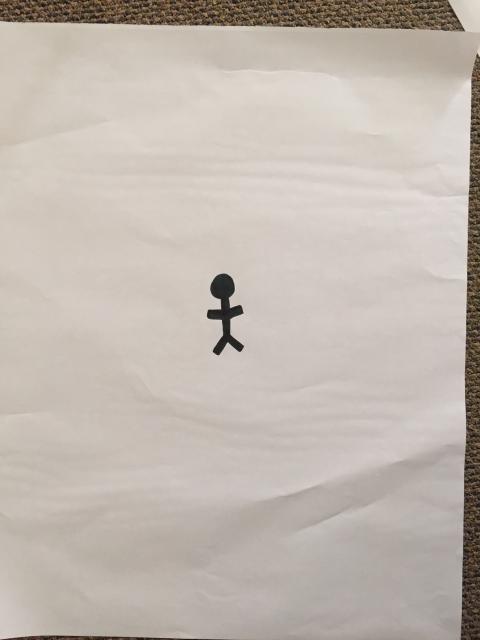Diversity and Deviance: A Biological Perspective Revisited
By Serendip EditorMarch 22, 2017 - 12:29
by Paul Grobstein
Published in Bryn Mawr Alumnae Bulletin, Spring 1989; Published on Serendip, 1994-95
Serendip is an independent site partnering with faculty at multiple colleges and universities around the world. Happy exploring!
by Paul Grobstein
Published in Bryn Mawr Alumnae Bulletin, Spring 1989; Published on Serendip, 1994-95

Here are two articles detailing what Chimamanda Ngozi Adichie said and the backlash following it for those who have not read up on it:


I found the theory of Deaf-gain is somewhat similar to the Neurodiversity paradigm, where in both situations, diversity was emphasized in stead of differences or deficiency. I am especially intrigued by ASL and how ASL constitute a complex language system on its own. It seems to me that ASL has greatly contributed to the formation of deaf culture and essential to the theory of Deaf-Gain. Language is always cruicial in the formation of any culture. It is only through the share of language (or any other means of communication) can a group of people exchange ideas and thoughts. The beauty of ASL was very well displayed in the film Deaf Jam. It is my second time watching Deaf Jam, and I am once again drawn into the expressive power of ASL.

Hello Everyone,
On Thursday, I am planning on spending the day (with the acception of food breaks) in the Campus Center to hold office hours. I want to re-emphasize my role as a TLI to support Jody and Anne as we construct a space for you to become responsive learners. I am still open to emailed comments, or emails setting up a one on one meeting, but I want to reach out when I can. For Books Through Bars folks, if you want to come in to talk about ways to collect book donations I can walk through that process, or we can process the course as my office hours typical go.
Have a great week. Enjoy the community day of learning as well. Let this be a week where we push ourselves and each other.
-Olivia
The reading, Designing Deaf Babies, definiely shed some light on the topic of deafness in families for me. I have heard from reports before in the scientific comunnity about reserachers being approched by familes where both partners were deaf requesting specially IVF treatments that would ensure that their child also be deaf. What was most interesting about this reading was the exploration of the contact zone: where the hearing and deaf (in this example) meet. I would expect that a hearing child to two deaf parents and possible other deaf children would still be included and loved within the familiy, however, Designing Deaf Babies presented thoughts on how that child would have difficulties growing up in a family and what it would mean for the family unit to have a hearing child.

The past Friday we started planning the activities that we would do with the inmates at the jail. These inmates were going to be pretty young so we wanted to make sure the activities that we had planned would be fun, engaging, and creative while still allowing them to express artistic freedoms. We planned a few story telling games to get them warmed up and then planned a "create a superhero" activity with them in which they had to create one and defeat a villian that they created as well. Unfortunately, I couldn't attend the meet :( but I was happy to be a part of the planning and am looking forward to the next visit.
“Designing Deaf Babies and the Question of Disability” by Bauman was an extremely thought provoking piece. My initial reaction to reading the first line of the article (a Deaf couple sought a Deaf donor to increase their chances of having a Deaf baby) was extreme confusion. Wouldn’t deafness bring challenges to the child? Would a parent want the child to face such challenges? Looking back I’m very annoyed at myself for allowing such a narrow-minded view, but I want to give you all my genuine initial reaction. Nevertheless, reading further into the article I realized my confusion stemmed from my mind locking into the medical model of disability and ignoring the social model.

I really enjoyed the DSR article. An idea that I found particulatrly interesting was the author's discussion of how the acceptance of signed languages in the realm of academia could enhance the academic discourse. I was thinking while reading about how some of the ways in which it makes most sense for people in the Deaf studies community to justify the equality of d\Deaf people are exactly the same argumets that may be harmful to other disability groups. I was recalling Neilson's account of how Deaf activists were initially hesitant to join the disability rights movement because assumidly their activism centered on distancing d\Deafness from disability. Another thought I had: I wonder if there are deaf people who feel alienated from the hypervisual signed culture, e.g.

Last week, I decided to create a mock lesson plan scene surrounding the Elaine Bartlett story. I picked a scene from the book on her life that I thought was really salient and did it in the style of the workshops that I have been doing in a middle school. The students already have a prior understanding of what structural violence is and how the school structure leads to the funneling of Black youth into the prison system, but have not discussed how the prison structure acts as a magnet to suck those who try to leave back into it. This scene is meant to be somewhere in the middle of a larger skit.
Scene X